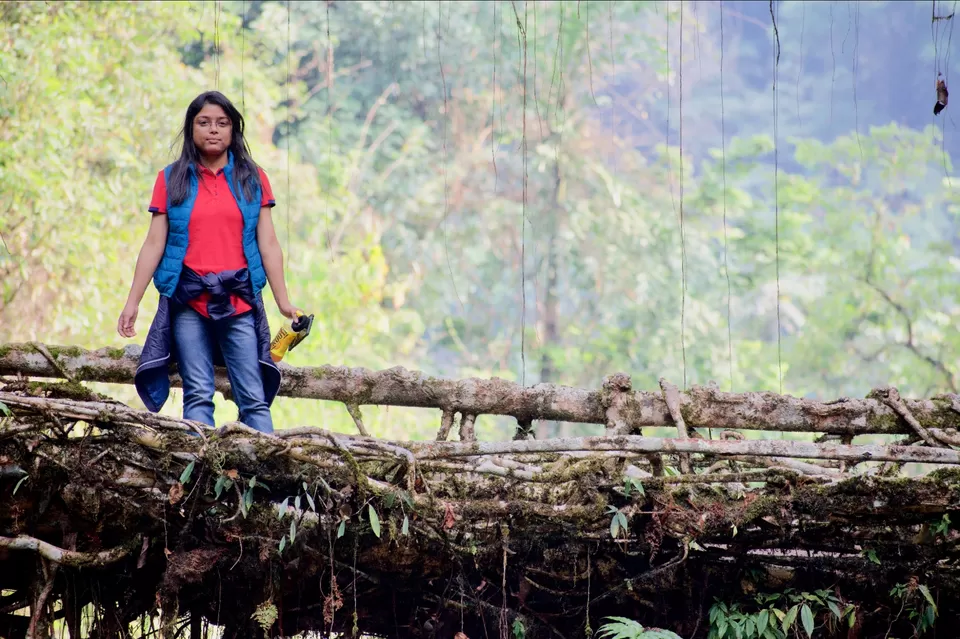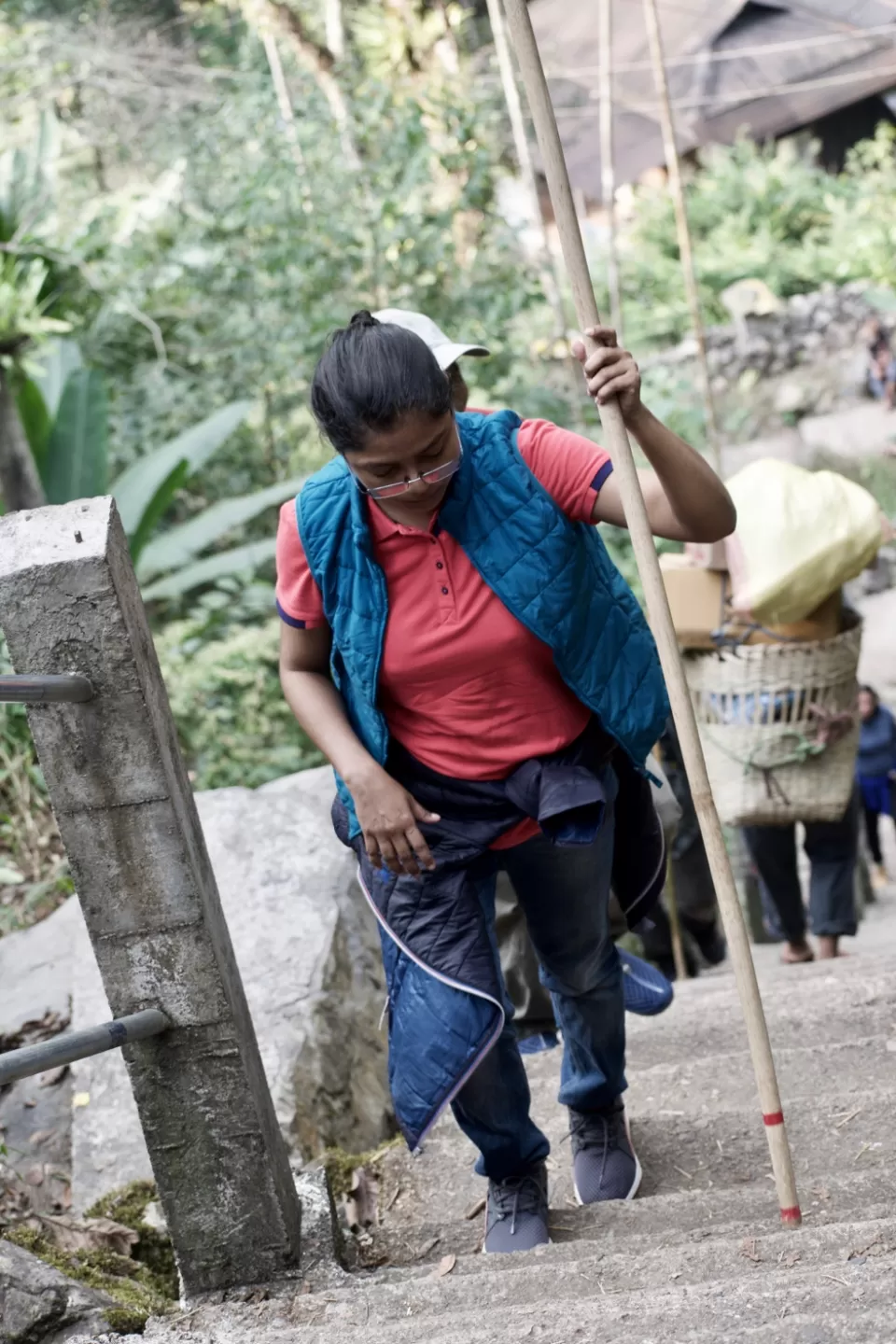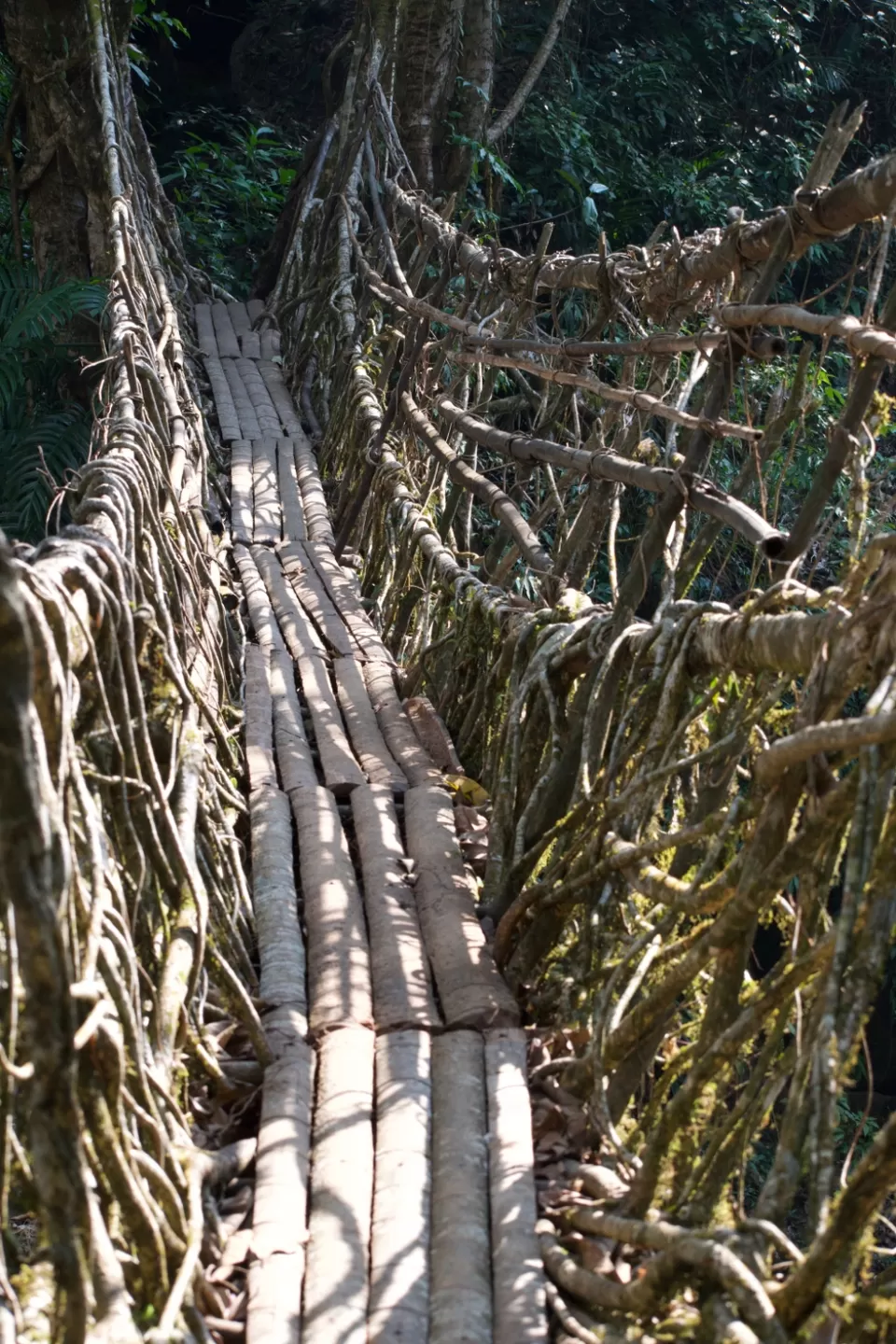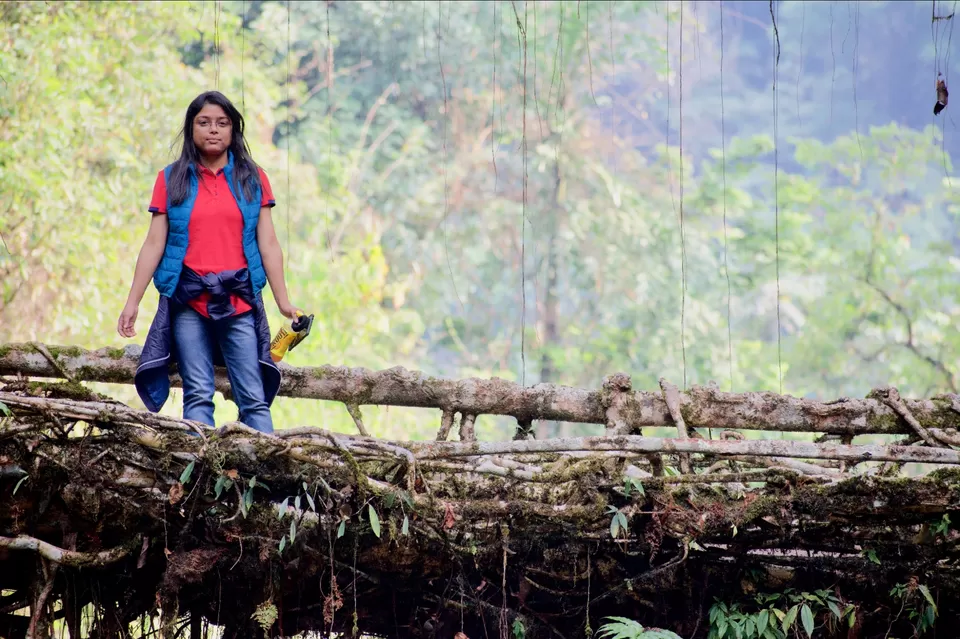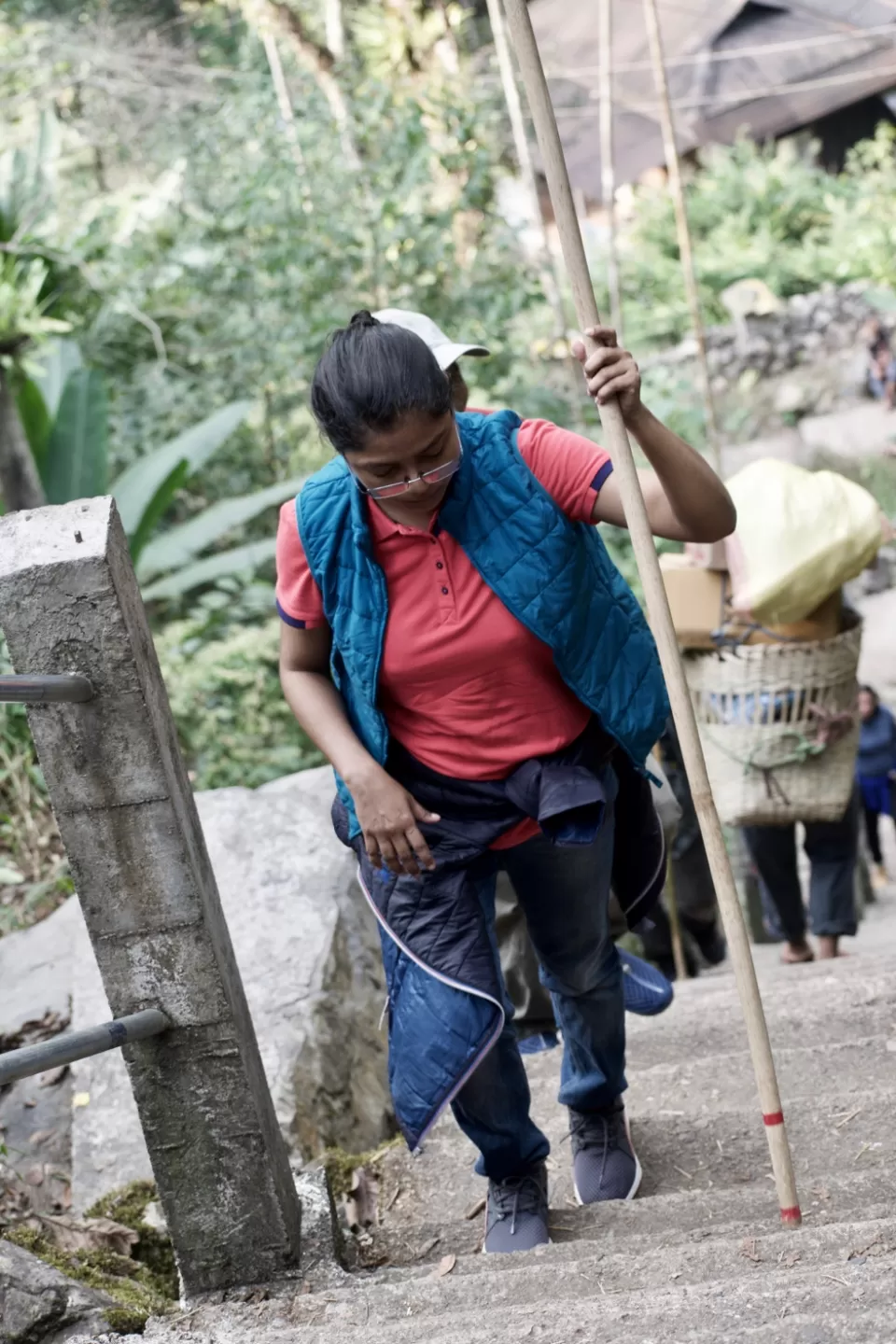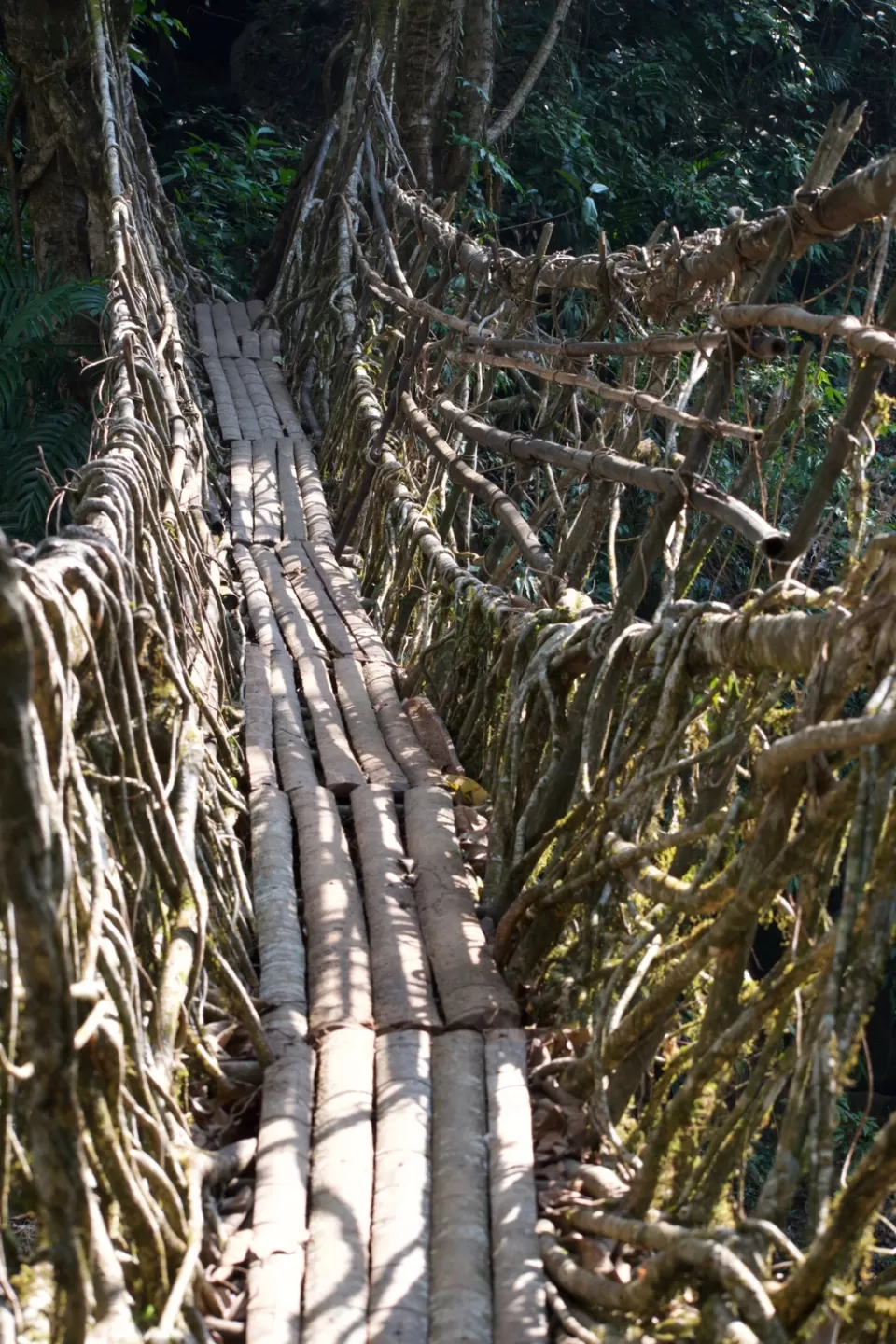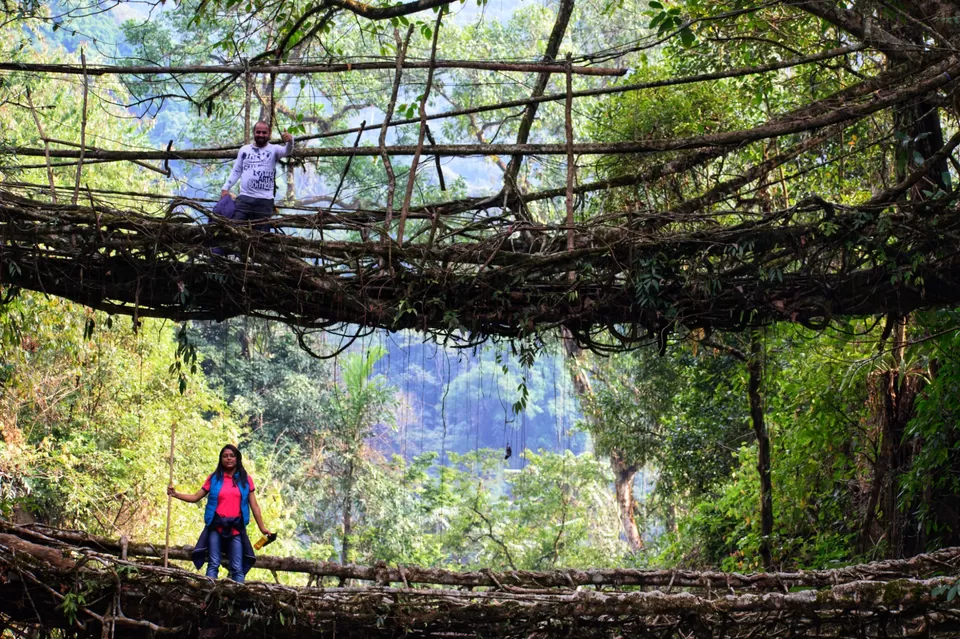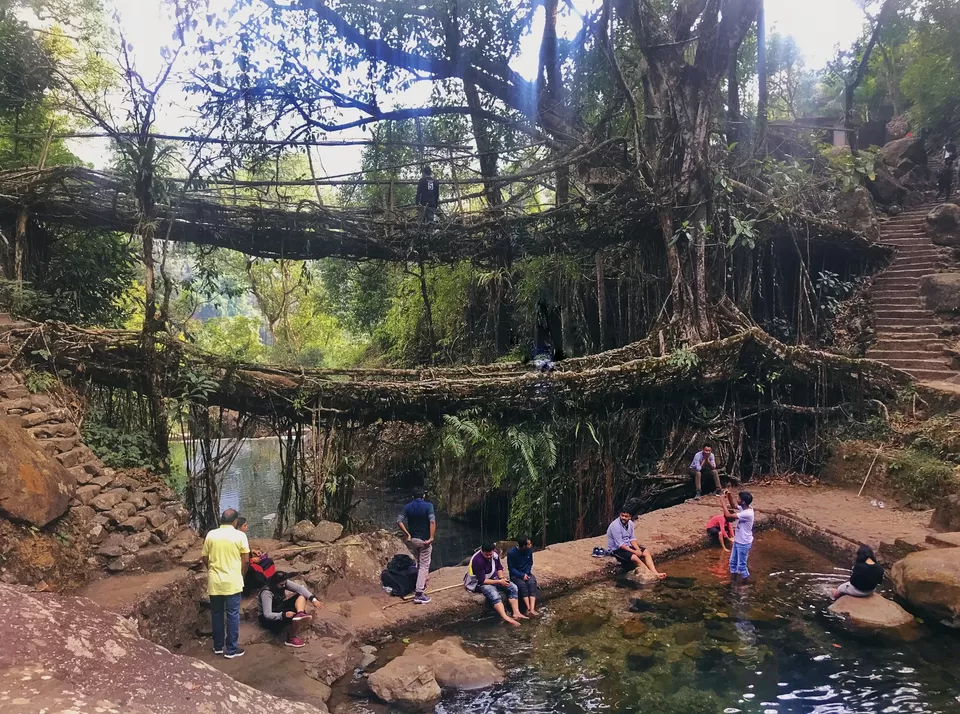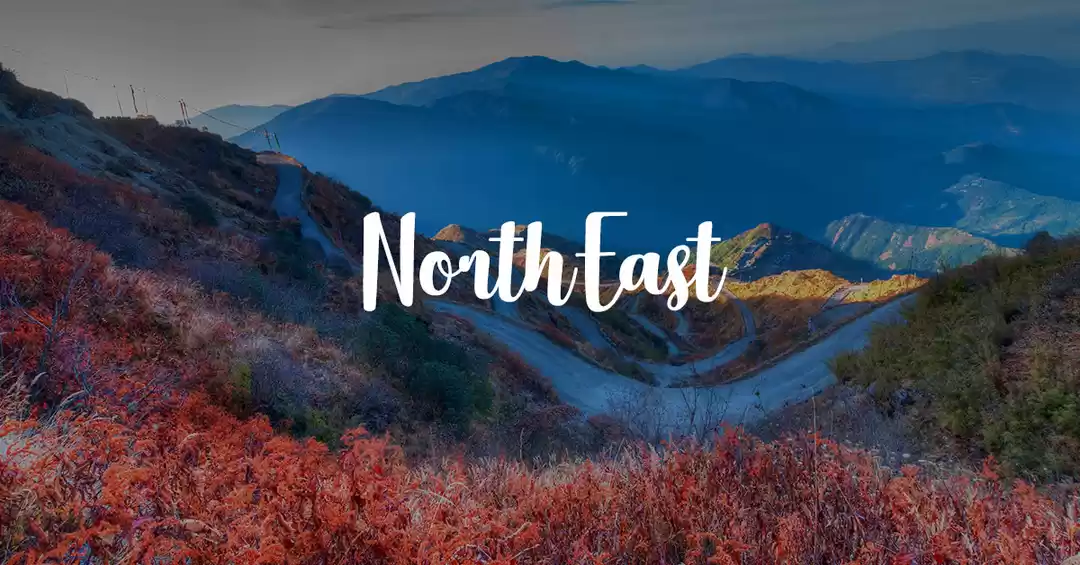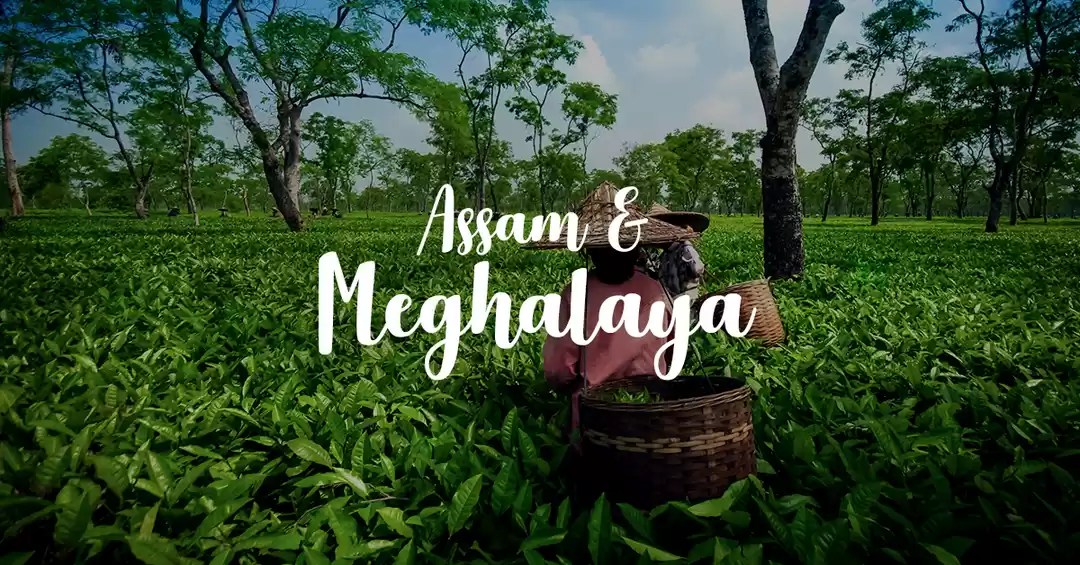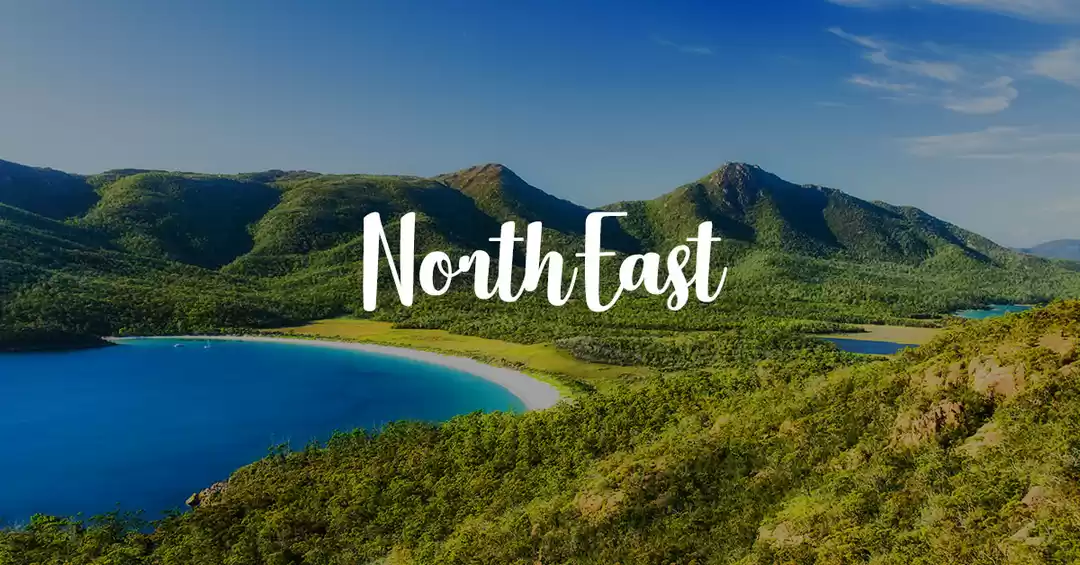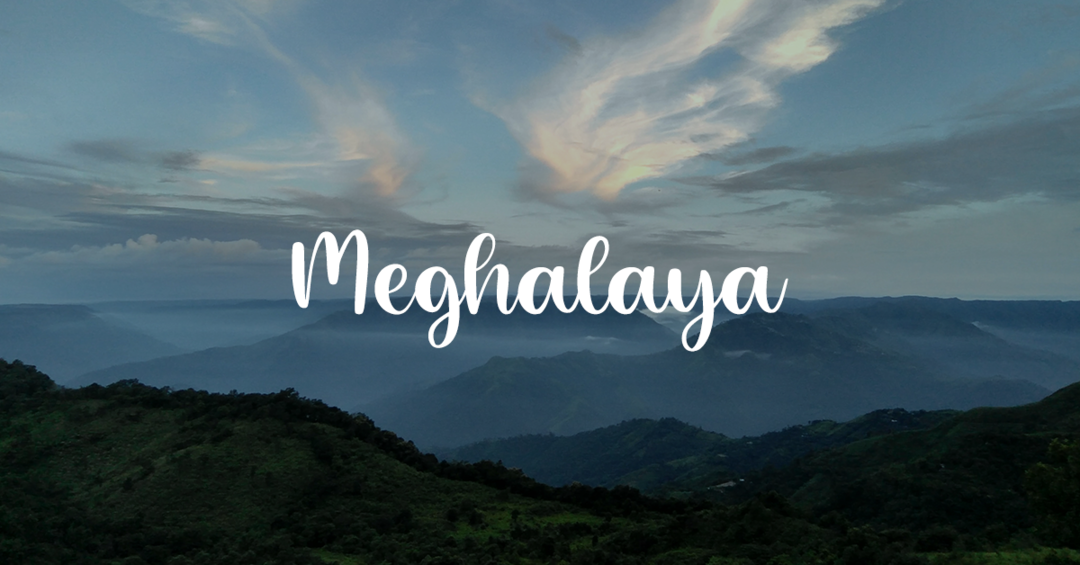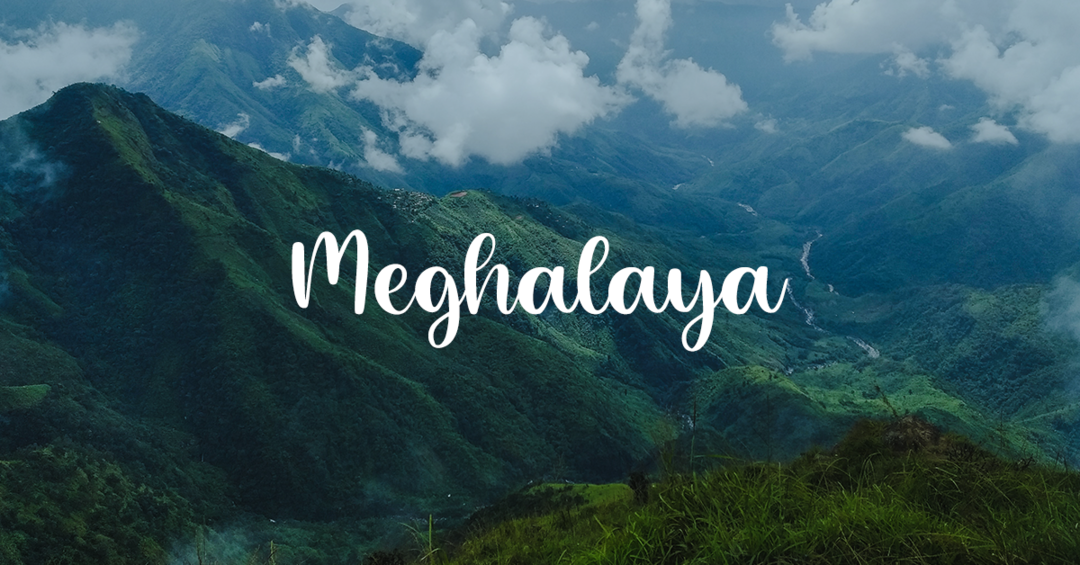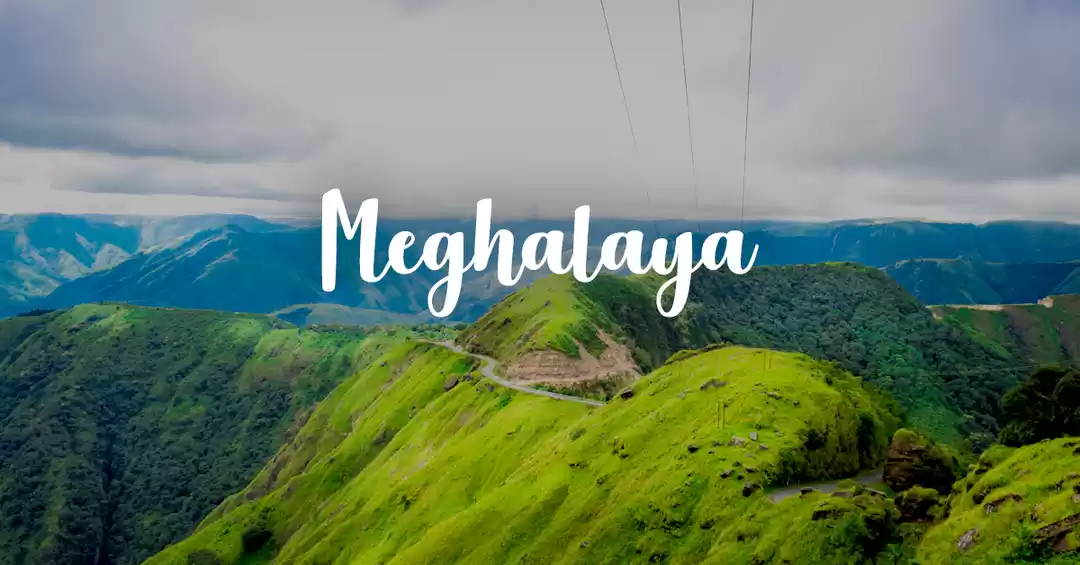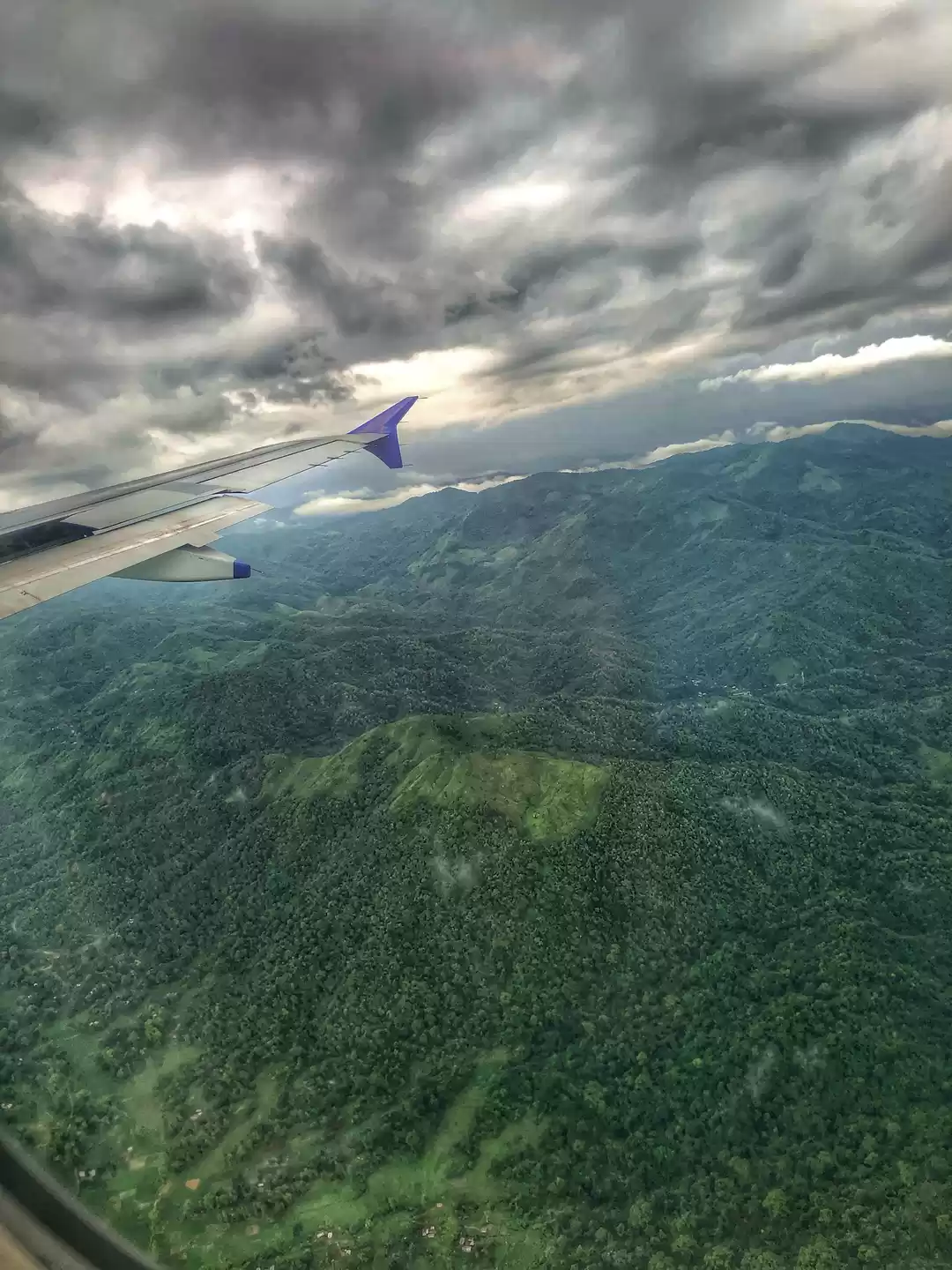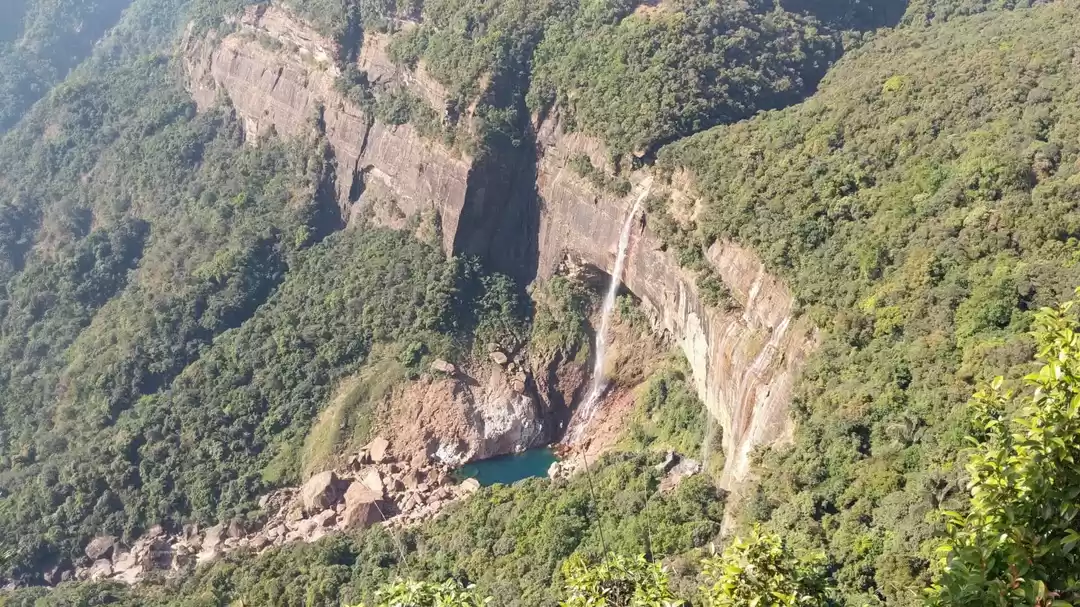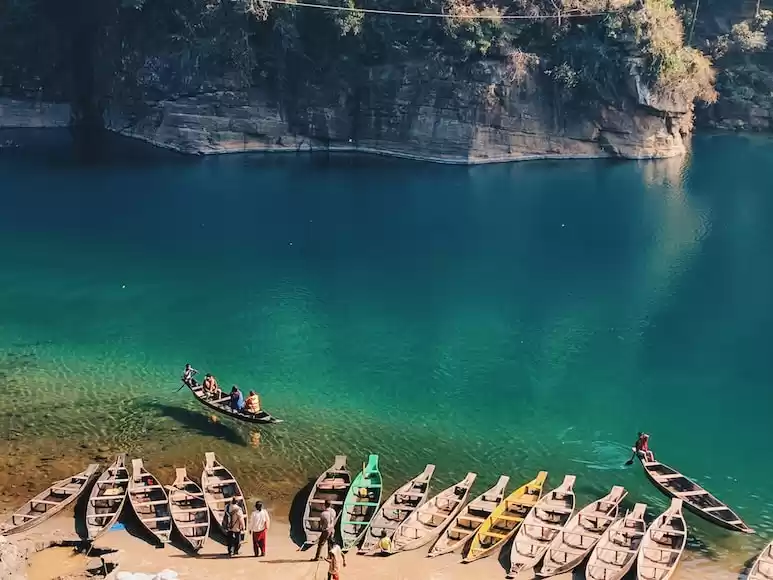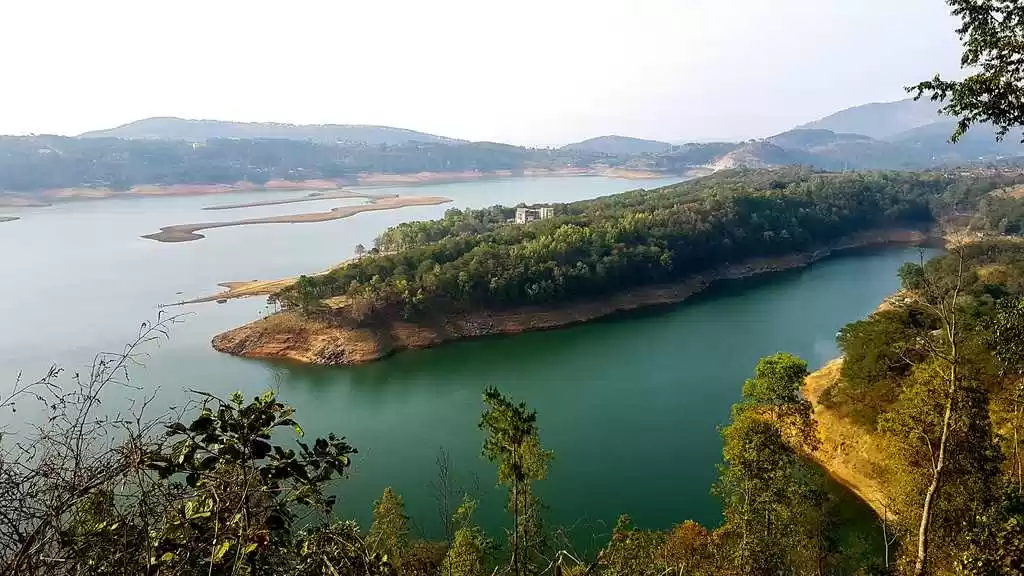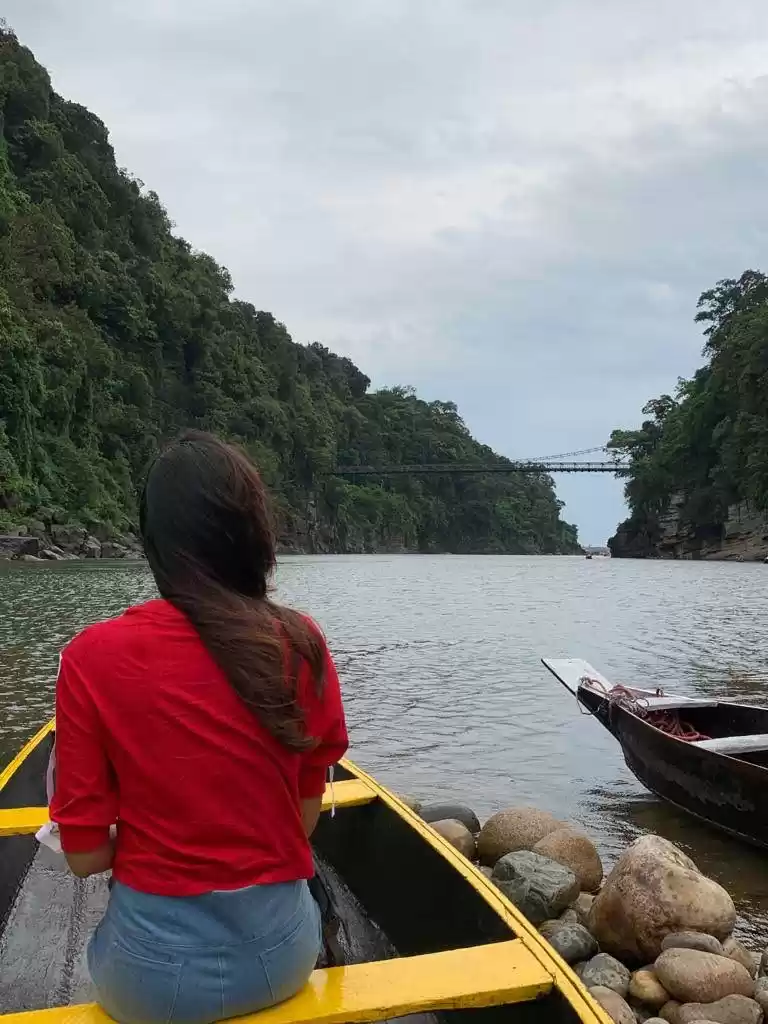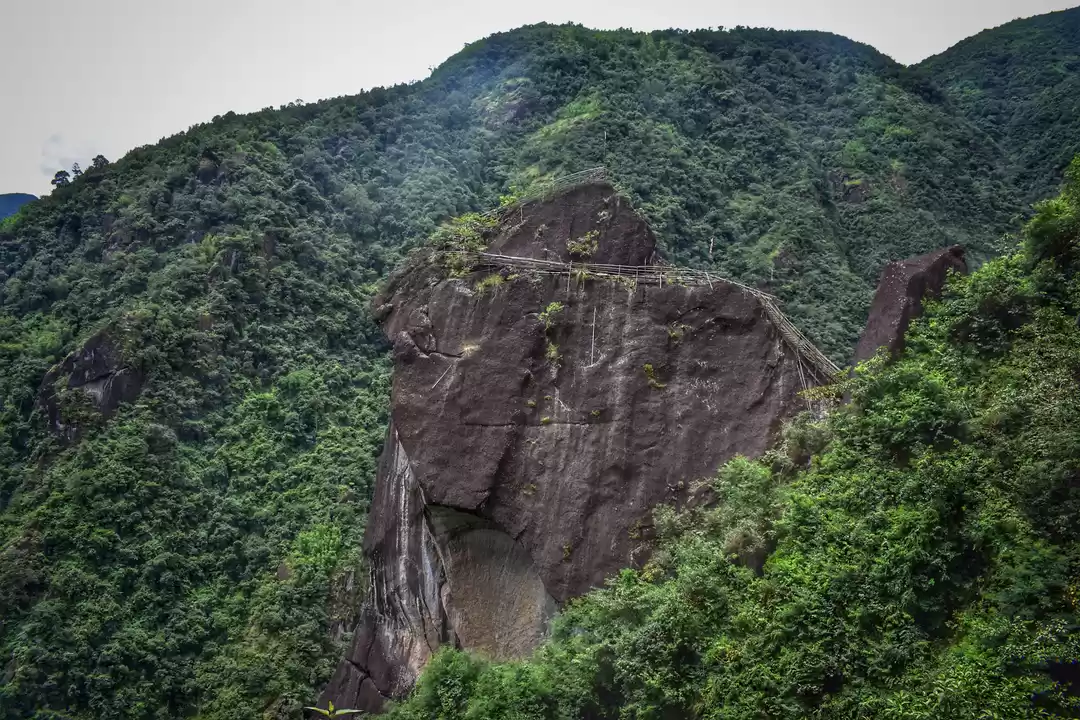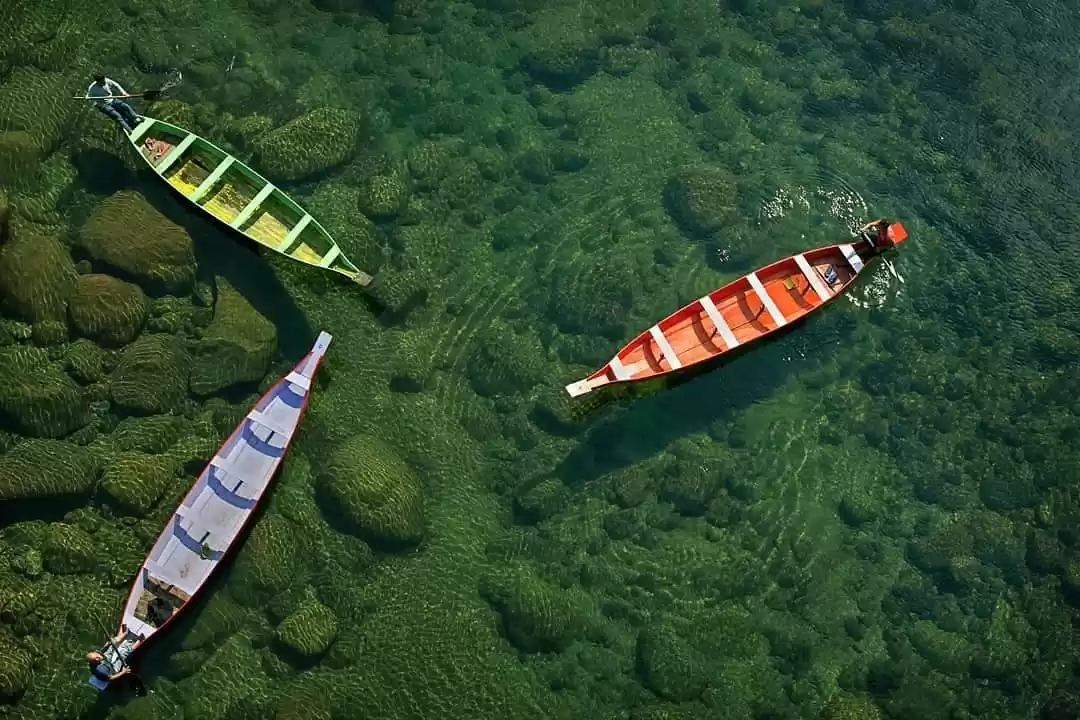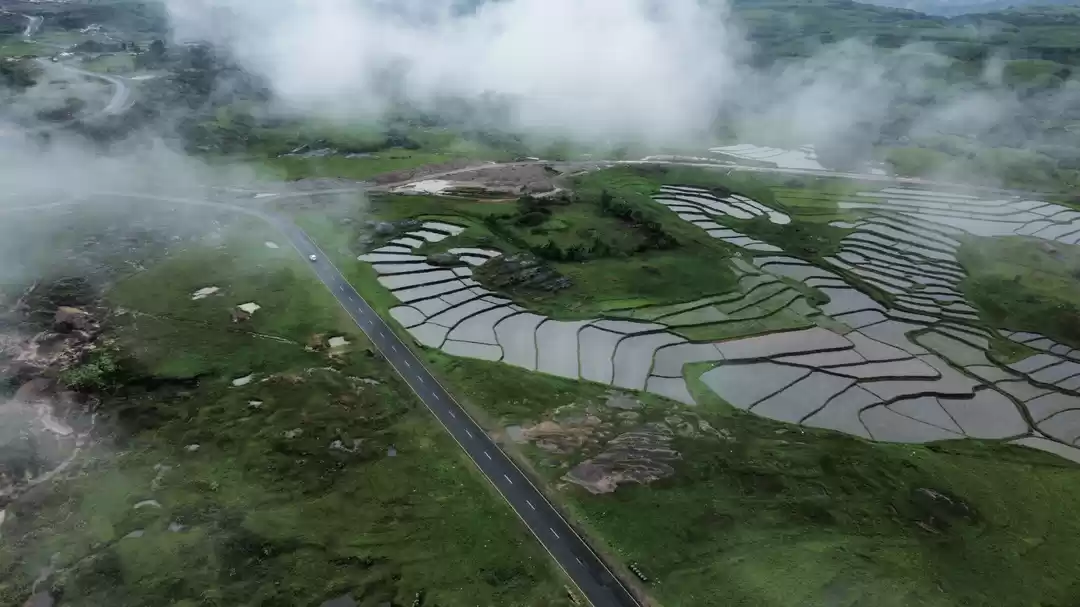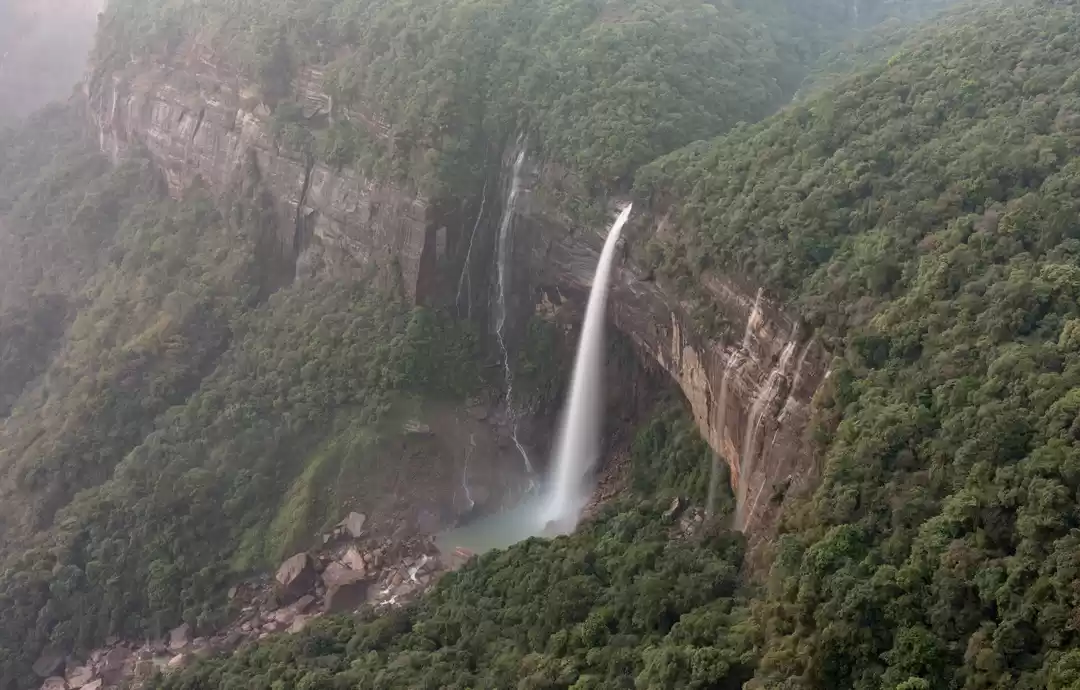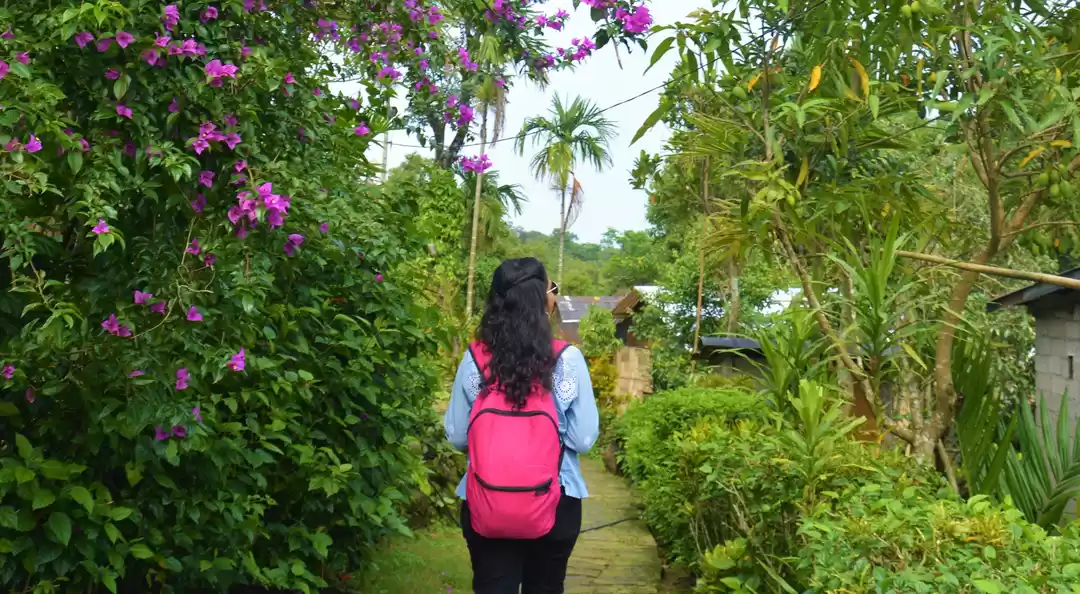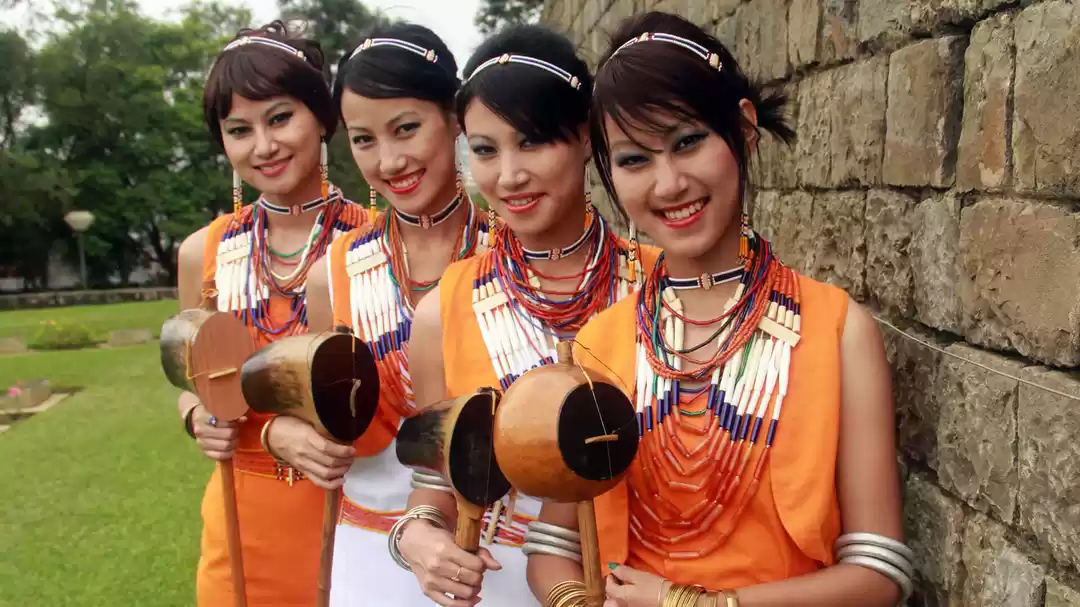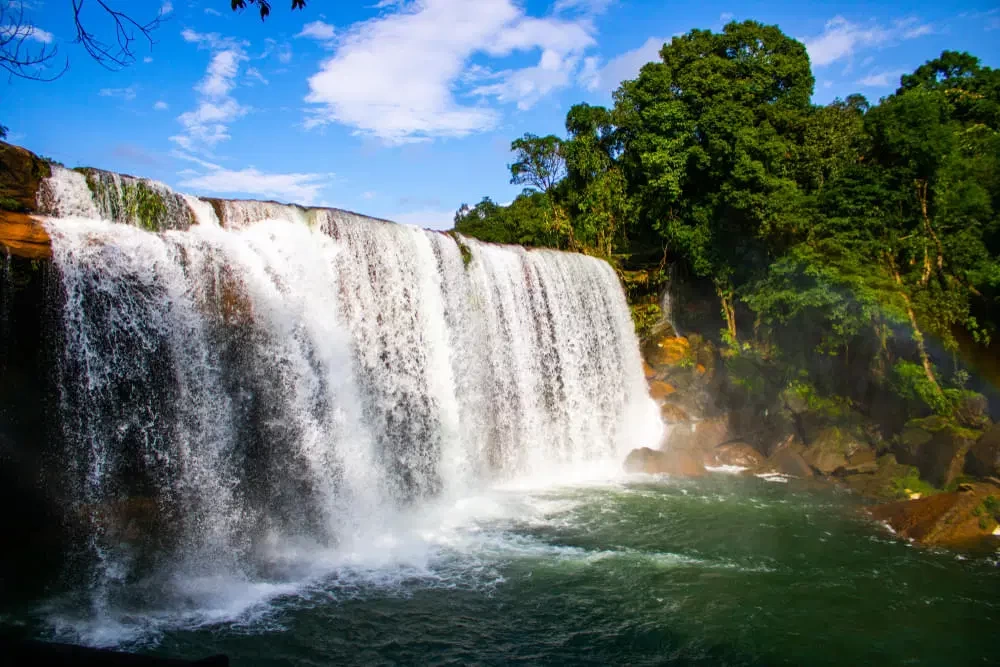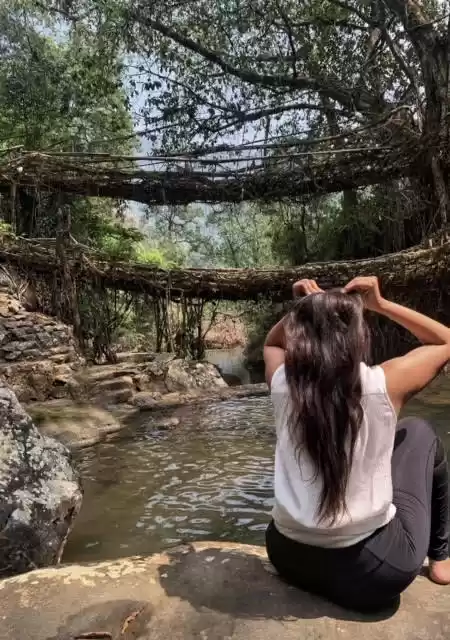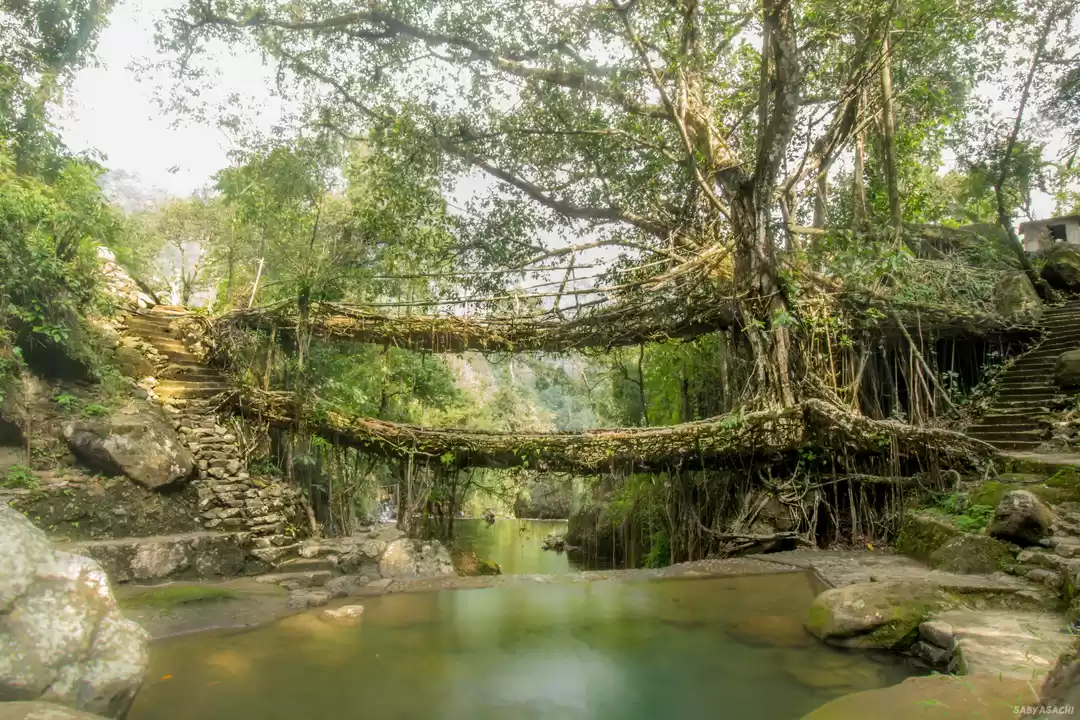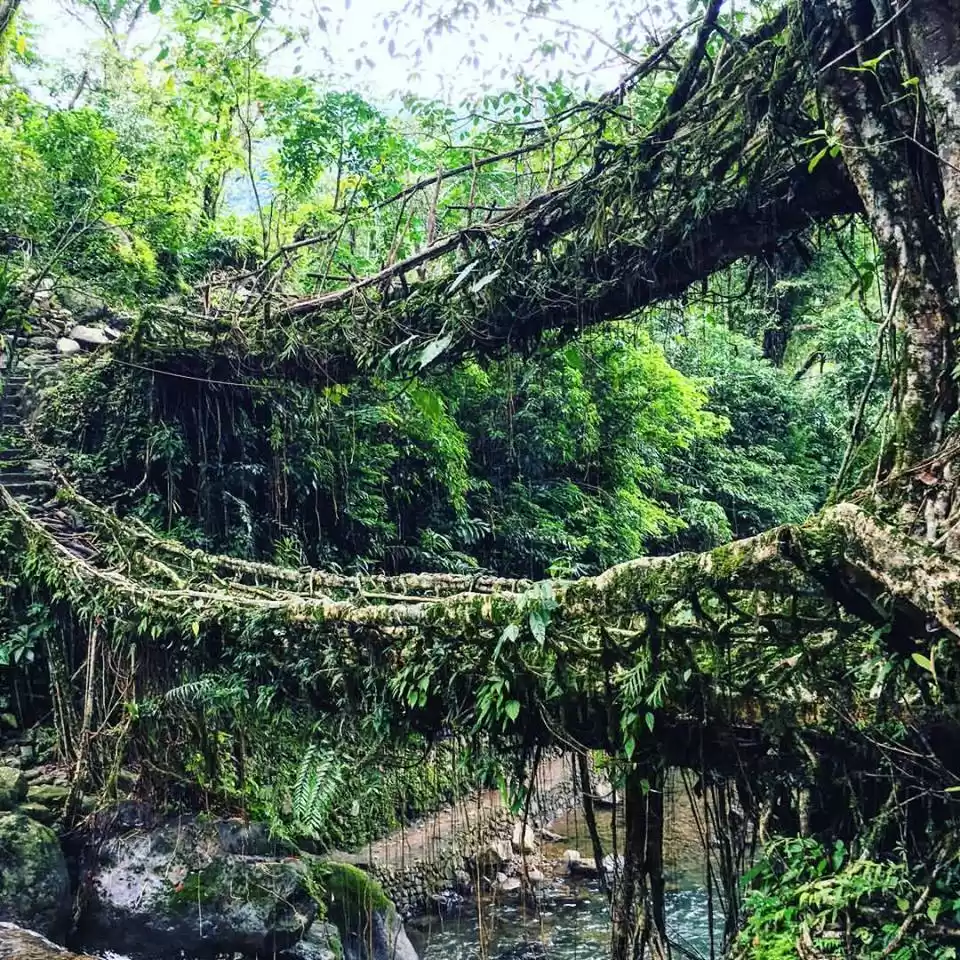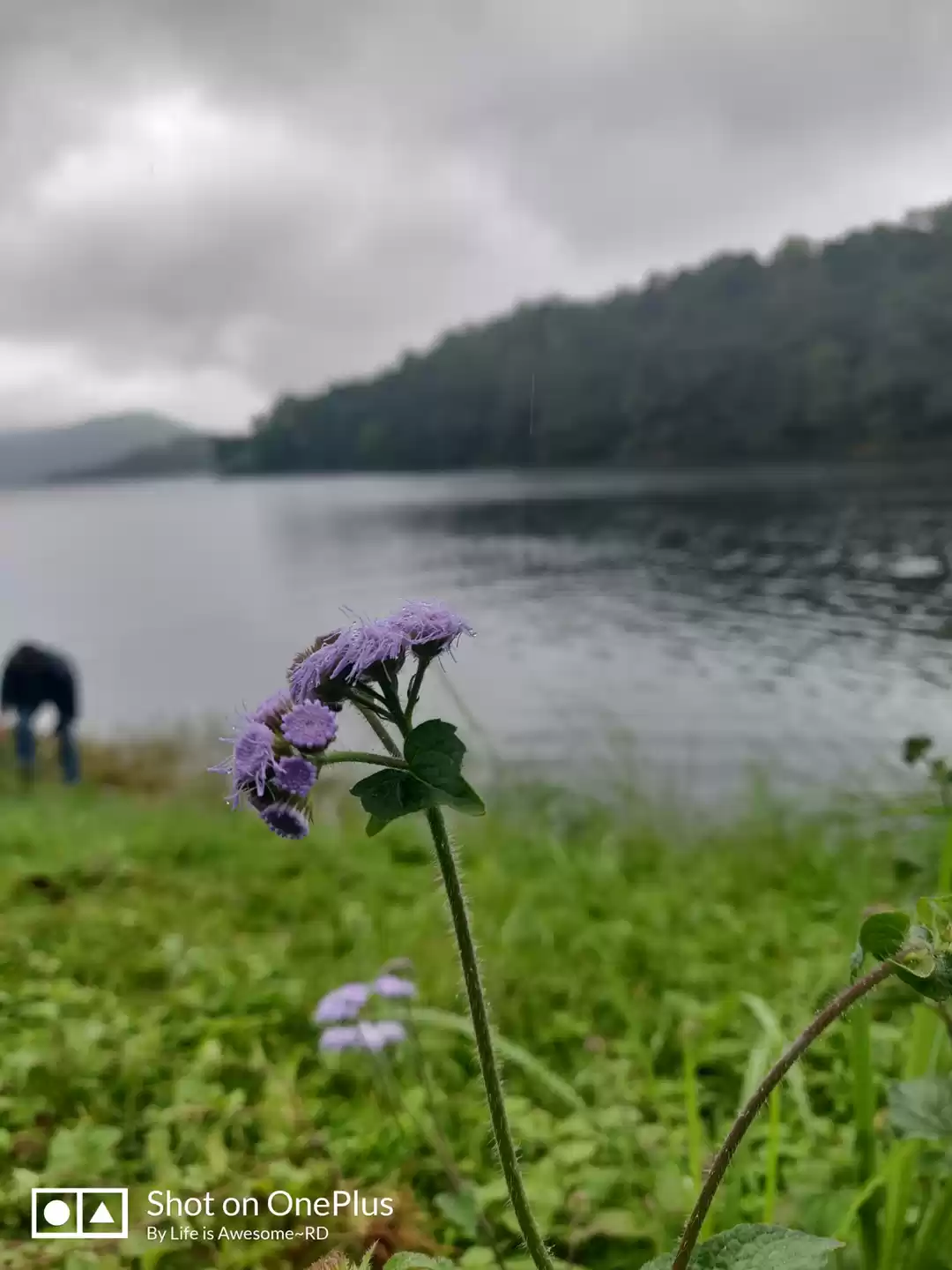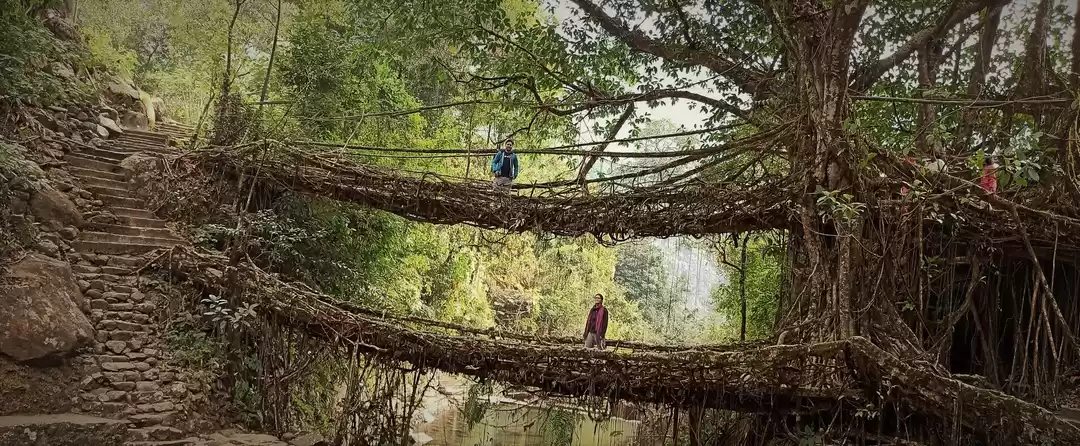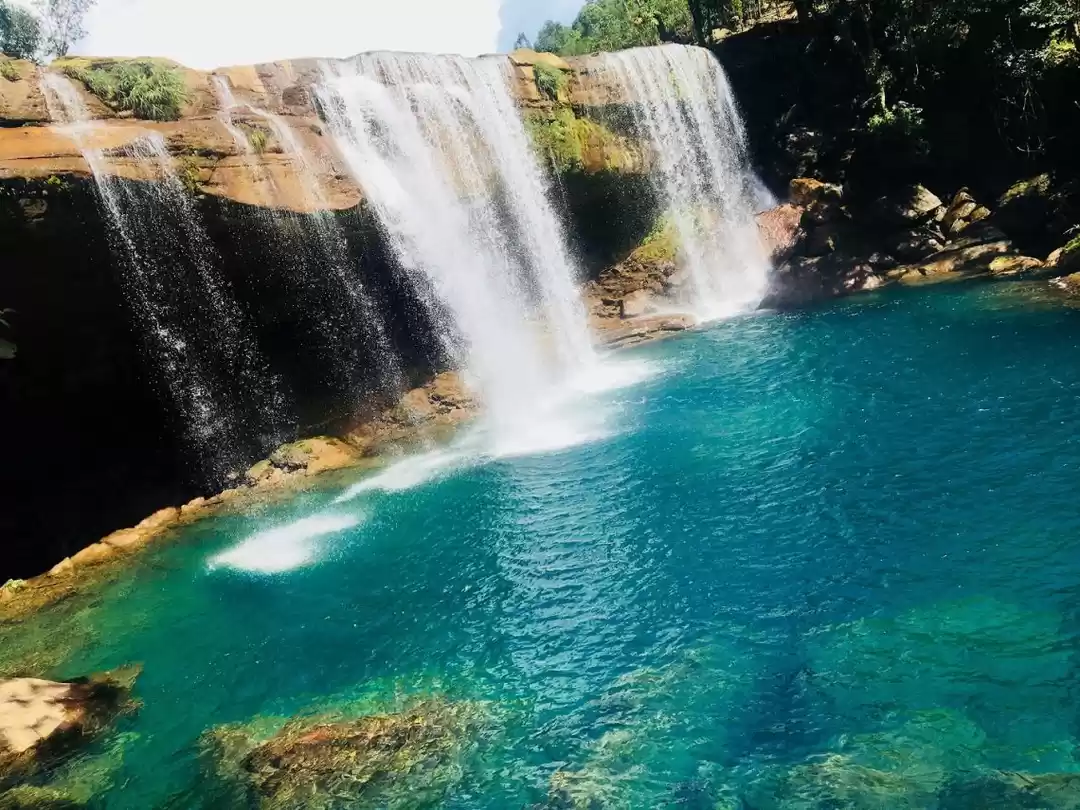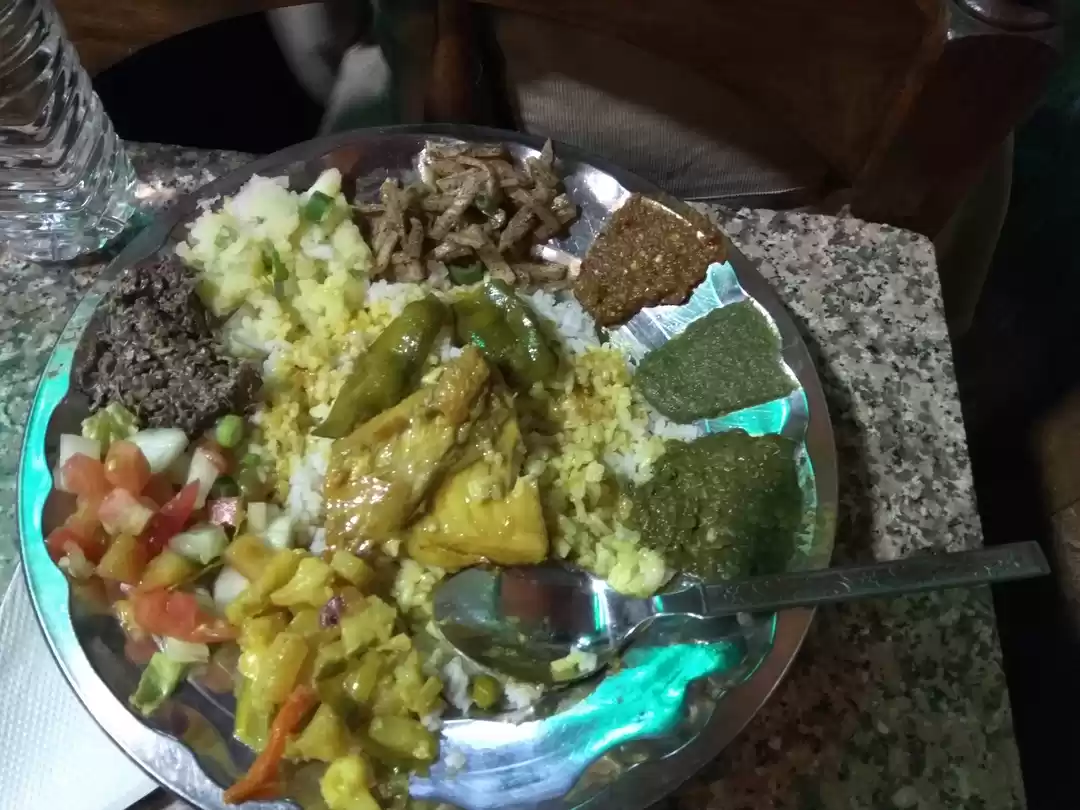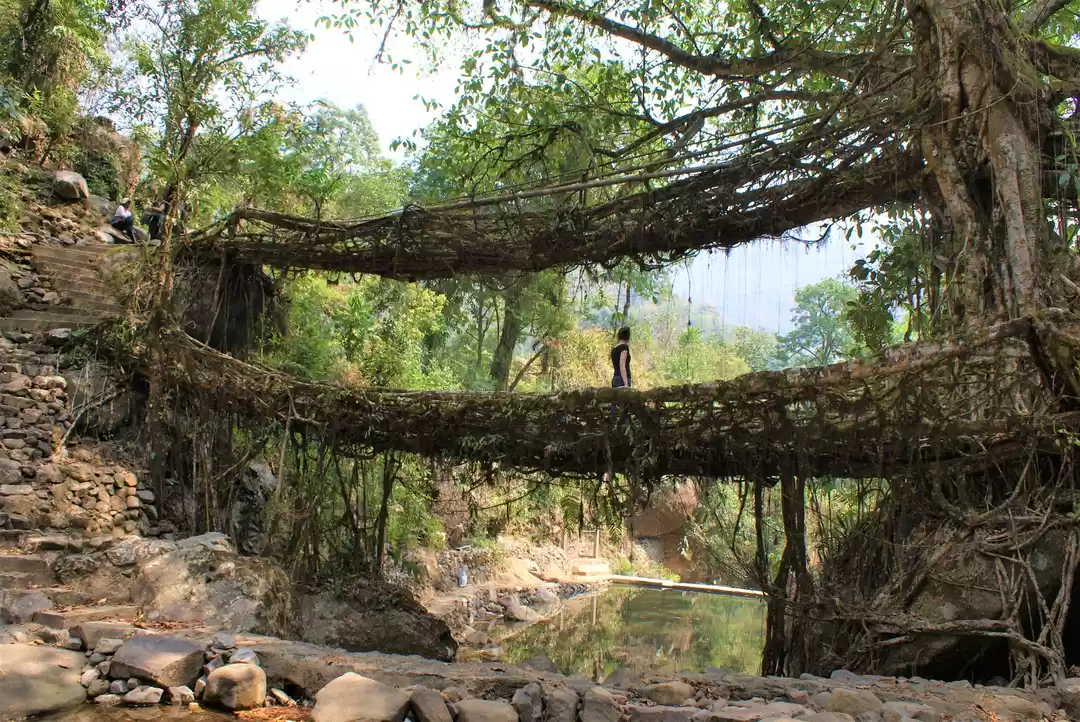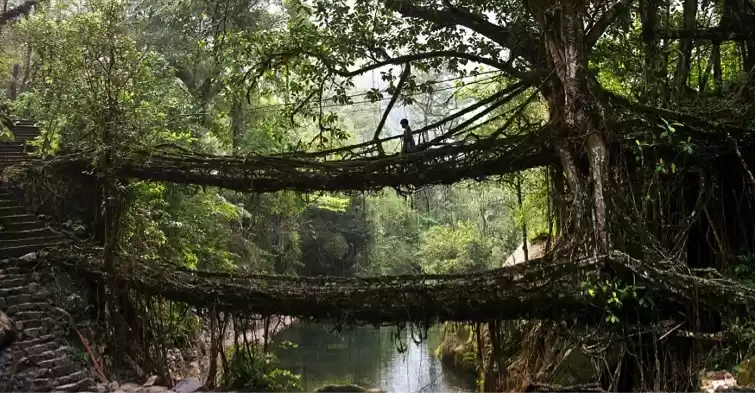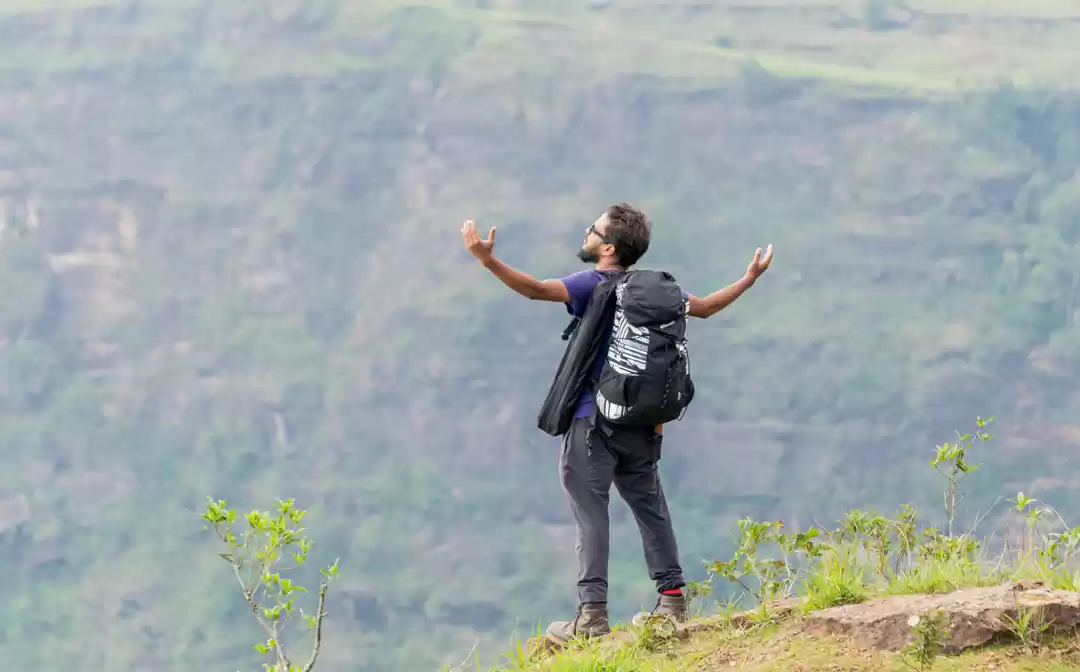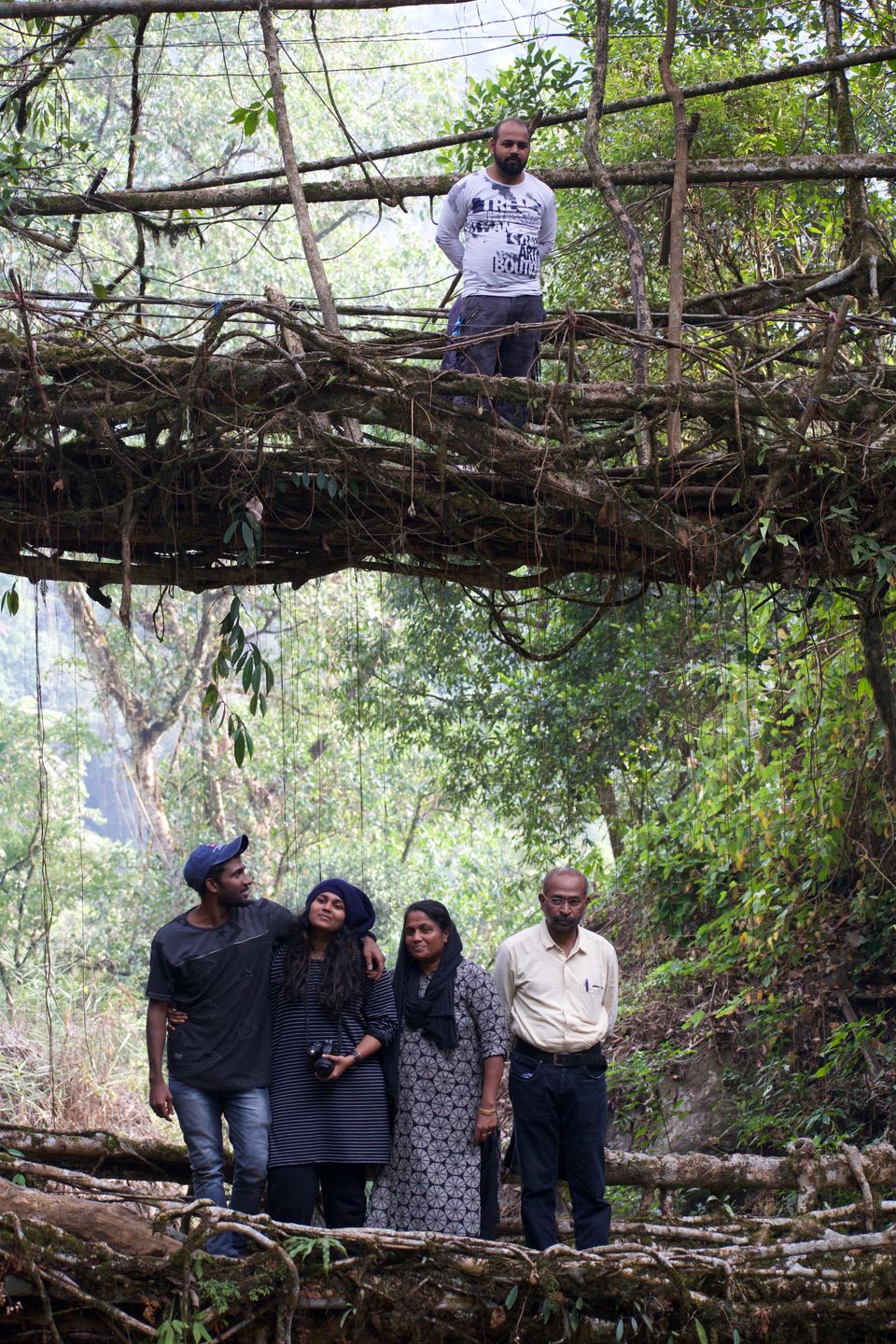
Nestled deep within the lush green landscapes of Meghalaya, India, lies a hidden gem known as the Double Dekker Root Bridge. This awe-inspiring natural wonder is a testament to the harmonious relationship between man and nature, showcasing the incredible engineering skills of the local Khasi tribes. Visiting the Double Dekker Root Bridge is a journey that combines adventure, cultural immersion, and breathtaking beauty.
**Reaching the Double Dekker Root Bridge**
The Double Dekker Root Bridge is located in the village of Nongriat, approximately 12 kilometers south of the popular tourist town of Cherrapunji. The easiest way to reach Cherrapunji is by air or rail to Guwahati, the capital city of Assam. From Guwahati, it takes about a four-hour scenic drive to reach Cherrapunji. From Cherrapunji, hire a local taxi or take a shared cab to the village of Tyrna, which serves as the starting point for the trek to Nongriat.
**History and Significance**
The history of the Double Dekker Root Bridge dates back several centuries. The indigenous Khasi people ingeniously trained the roots of rubber fig trees (Ficus elastica) to form sturdy bridges across the fast-flowing streams of the region. The roots were guided and intertwined over many years, creating an intricate network that could bear the weight of humans. The Double Dekker Bridge is unique as it consists of two layers of roots stacked on top of each other, resembling a double-decker structure. These living root bridges are not only functional but also environmentally sustainable, as they grow stronger with time.
**Where to Stay**
Accommodation options in Nongriat are limited but charming. The village offers basic guesthouses and homestays, providing visitors with an authentic experience of Khasi hospitality. Staying in Nongriat allows you to immerse yourself in the local culture, interact with the villagers, and witness their way of life. It is advisable to book accommodation in advance, as availability can be limited due to the bridge's growing popularity among tourists.
**Nearby Places of Importance**
While the Double Dekker Root Bridge is the main attraction, there are several other notable sites in the vicinity worth exploring. A short trek from Nongriat will lead you to the mesmerizing Rainbow Falls, a magnificent waterfall that cascades down into a natural pool. The translucent waters and the vibrant rainbows created by the waterfall make it a picturesque spot for swimming and relaxation. Additionally, the village of Cherrapunji offers attractions such as the Mawsmai Caves, Nohkalikai Falls, and the living root bridges of Mawlynnong, which was declared the cleanest village in Asia.
**People and Culture**
The Khasi people, who inhabit the region, are known for their warm hospitality and rich cultural heritage. Interacting with the locals gives visitors a chance to learn about their traditional customs, folklore, and unique matrilineal society. The Khasi language, music, and dance form an integral part of their cultural identity. Indulging in local cuisine, which includes delicacies like Jadoh (rice and meat dish) and Tungrymbai (fermented soybean dish), is a must for a complete cultural experience.
**Cost of the Trip**
The cost of a trip to the Double Dekker Root Bridge varies depending on several factors, including transportation, accommodation, and personal expenses. Airfare or train tickets to Guwahati, transportation to Cherrapunji, and hiring a taxi or sharing a cab to Tyrna.
Here's a breakdown of the estimated costs for a trip to the Double Dekker Root Bridge:
1. Transportation:
- Flight or train tickets to Guwahati: The cost varies depending on your location and the time of booking.
- Guwahati to Cherrapunji: Approximately $20-$30 per person for a four-hour taxi ride.
2. Accommodation:
- Guesthouses or homestays in Nongriat: The cost ranges from $10 to $30 per night, depending on the type of accommodation and facilities.
3. Food:
- Meals in Nongriat: Local restaurants and eateries offer affordable meals ranging from $3 to $10 per person per meal, depending on your preferences.
4. Trekking Guide:
- Hiring a local guide for the trek: It is recommended to hire a guide for safety and assistance. The cost is approximately $10-$15 per day.
5. Miscellaneous Expenses:
- Entry fees: There are no specific entry fees for visiting the Double Dekker Root Bridge, but there might be nominal fees for nearby attractions like Rainbow Falls or Mawsmai Caves.
- Local transportation: The cost of hiring a taxi or shared cab for local transportation within Cherrapunji or nearby attractions can vary depending on the distance and negotiation skills.
- Tips and souvenirs: It's advisable to keep some cash for tipping guides, porters, and purchasing souvenirs.
Please note that these are estimated costs, and prices may vary based on personal preferences, the season of travel, and individual spending habits. It's recommended to have some extra funds for unforeseen expenses and to account for any fluctuations in prices.
**Precautions to be taken before trekking to Double Dekker Root Bridge**
Before embarking on a trek to the Double Dekker Root Bridge, it's essential to take certain precautions to ensure a safe and enjoyable experience. Here are some precautions to consider:
1. Physical Fitness: The trek to the Double Dekker Root Bridge involves navigating steep slopes, stairs, and uneven terrain. Ensure that you are in good physical condition and capable of enduring a moderate level of physical exertion. Regular exercise and cardiovascular activities leading up to your trip can help improve your fitness level.
2. Trekking Gear: Wear comfortable and sturdy trekking shoes with good grip to navigate the slippery and muddy trails. Carry a lightweight backpack with essentials like water, snacks, sunscreen, insect repellent, a first aid kit, and a raincoat or poncho in case of rain. It's also advisable to carry a walking stick for stability.
3. Hydration and Nutrition: Carry an ample supply of water to stay hydrated throughout the trek. There may not be many opportunities to refill water bottles along the way. Pack high-energy snacks or light meals to keep your energy levels up during the trek.
4. Inform Others: Inform a family member or friend about your trekking plans, including the expected duration of the trek and your estimated return time. This ensures that someone is aware of your whereabouts in case of any unforeseen circumstances.
5. Local Guide: Hiring a local guide is highly recommended for the trek to the Double Dekker Root Bridge. They are familiar with the trails, can provide valuable insights, and ensure your safety throughout the journey. They are also well-versed in first aid and can offer assistance if needed.
6. Weather Conditions: Check the weather forecast before starting your trek. Avoid trekking during heavy rainfall or inclement weather as it can make the trails slippery and dangerous. Carry appropriate rain gear and be prepared to alter your plans if the weather conditions worsen.
7. Respect the Environment: The Double Dekker Root Bridge is a natural wonder, and it's crucial to respect the surroundings. Avoid littering, damaging vegetation, or causing any harm to the ecosystem. Follow the guidelines provided by your guide and local authorities to preserve the beauty of the area.
8. Personal Safety: Stay alert and cautious during the trek. Watch your step, especially on slippery surfaces and near the edges. Do not attempt any risky maneuvers or venture into restricted or unsafe areas. Listen to your guide's instructions and adhere to their advice.
By following these precautions, you can ensure a safe and enjoyable trek to the Double Dekker Root Bridge while appreciating the natural beauty and cultural heritage of the region. Remember, the experience of exploring the Double Dekker Root Bridge and its surroundings is priceless, and the memories you create will last a lifetime.
